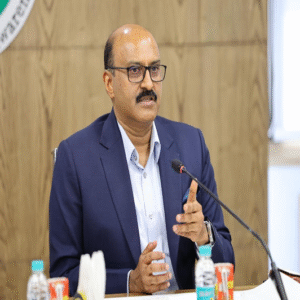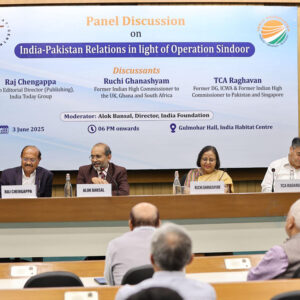The development of the Northeast is tied with the development of India’s neighbours and the countries of ASEAN. Friendly partner countries from other regions too are integral to the vision for the Northeast and can contribute substantially. For a short period in the Indian history, there has been a misconception about the eight states of the Northeast being a “frontier” of India. The use of “short period of history” is deliberate here. If the hundreds and thousands of years of civilisation is considered, far from being a frontier, the Northeast has been at the heart of Indian imagination. If South Asia and Southeast Asia is taken as a continuum – as it has been perceived for most of history – then the Northeast is right in the middle of it.
The Northeast is an amazing social and cultural ecosystem. Few regions of the world have such a wealth of cultural, ethnic and religious diversity packed into such a small area. This variety is an inspiration for the mankind. The Northeast is home to some of the oldest indigenous communities in the world. It is one of the Indian spiritual homelands. Whether it is the traditions of the Devi in Kamakhya or of Buddhism in Tawang and elsewhere, they make for a sacred bond that unites India with Southeast Asia. Christian missionaries have contributed to education here and there is even a small but thriving Jewish community in Manipur and Mizoram.
Prosperity is the Northeast’s natural destiny, its default position if it maybe said. The geographical location makes it the obvious gateway to India, linking the vast economies of the Indian subcontinent and of the ASEAN countries. This is the potential that needs to be tapped and this is the idea that must inspire the Summit. Central to the Government of India’s approach to the development of the Northeast is an urgent and speedy enhancement of connectivity. This is a multi-modal programme, across land, water and air. It refers both to connectivity within India as well as to connectivity between India and its eastern and Southeast Asian neighbours.
In the past three years, railway lines have finally come up in Arunachal Pradesh, fulfilling an old demand. An extensive development of railway links in the Northeast is under way, with investments totalling to Rs.90,000 crore. Road building in the region is busier than it has ever been. Border roads, national highways and state roads are all being built or improved. Incorporated in July 2014, the National Highways and Infrastructure Development Corporationis working with a special focus on the Northeast. It is engaged in about 100 road projects in the region. Inland waterways, especially along the majestic Brahmaputra and Barak rivers, can both save transport costs as well as facilitate connectivity. There is also a push for air connectivity. The creation of infrastructure in smaller cities and airports, along with more and more flights, is making the skies of the Northeast buzz with traffic.
In the broader neighbourhood, initiatives such as the India-Myanmar-Thailand trilateral highway and the Kaladan Multimodal Transit Transport Project are critical for many of the countries and especially for the Northeast. The Northeast is also the corridor for many trade and connectivity projects on the Bangladesh Bhutan India Nepal [BBIN] and the Bay of Bengal Initiative for Multi-Sectoral Technical and Economic Cooperation [BIMSTEC] platforms. It is rightful to say that the states of the Northeast region of India are the true drivers of India’s Act East policy.The Northeast Tourism Development Council, incorporated in March 2017is creating partnerships between government and private sector players, which will make the Northeast one of the leading tourism destinations of not just India, but also of Asia, where it deserves to be.
The sense of connect with the Northeast gives everyone a stake in the region. It doesn’t matter whether one is from the Northeast, from other parts of India or indeed from other countries connected by culture and geography, history and trade with the Northeast. The development of the North-East is a shared enterprise. The impressive degree of participation in the Northeast Development Summit, not only from Manipur and states of the Northeast, but from the rest of India and key partner countries is extremely optimistic.
In conclusion, the development of the Northeast is both the development of India, as well as the true measure of the India-ASEAN partnership. The opportunity is here to grab.
(This article is a summary of the inaugural address delivered by the President of India Shri Ram Nath Kovind at the North-East Development Summit organized by India Foundation in collaboration with Government of Manipur and Ministry of Commerce and Industry, Government of India at Imphal on 21st November, 2017.)
(This article is carried in the print edition of January-February 2018 issue of India Foundation Journal.)




